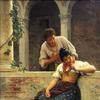Brilliant Colorful Quilts from Descendants Of Africa In India Adorn Galleries of The Davis Museum
- WELLESLEY, Massachusetts
- /
- February 05, 2018
A unique tradition of artful quilt making is displayed in Soulful Stitching: Patchwork Quilts by Africans (Siddis) in India, an exhibition of patchwork kawandi at the Davis Museum at Wellesley College. The fourteen quilts in the exhibition were created by Siddi women of Karnataka, descendants of early African immigrants to South Asia and enslaved Africans brought to India’s west coast from the 16th-century. The exhibition will be on view in the Freedman Gallery from February 13 through June 10, 2018.
While they have integrated many aspects of Indian cultures, Siddis have also retained and transformed African traditions. In the visual arts, one stands out: the patchwork quilts known as kawandi. These quilts, most often used as sleeping mattresses or covers for the cool, damp monsoon nights in India, are assembled from saris and bundles of old clothes passed down through families. They are crafted with patterns, colors, and textures from all types of fabrics and clothing.
Although each quilt has its own original design, every artist has used straight lines of closely spaced and carefully rendered running stitches. The quilters also carry on the tradition of “finishing the corners properly” with triangular patches called phulas, or flowers. The phulas serve also to mark the signature of the artist. Baby quilts are filled with a variety of shapes and sizes, and they are often bejeweled with many small, colorful patches called tikeli. The colorful patterns are meant to “stimulate and entertain” the child wrapped within.
“The tradition of creating these quilts has been passed down through Siddi communities for generations,” said Dr. Amanda Gilvin, assistant curator at the Davis Museum of Wellesley College. “These bold compositions of colorful fabrics are a fascinating way to understand more about the African Diaspora in the Indian Ocean World.”
The quilts in the exhibition were created by members of the Siddi Women’s Quilting Cooperative, a nonprofit established by women from three Siddi communities with the assistance of exhibition curator Henry John Drewal. When Drewal was in Karnataka documenting Siddhi expressive culture in 2004, the family he was staying with gave him a quilt to sleep on, and he then noticed similar quilts draped over fences, hung on lines, or spread on low roofs. A well-known art historian in the field of African and African Diasporic art, he was fascinated to learn more about this part of Siddi visual culture. An initial fund established by co-curator Sarah Khan and Wellesley College Professor Pashington Obeng, paid for the first group of large quilts made in August 2004. Professor Pashington Obeng over the years also incorporated aspects of Siddi visual arts into his teaching at the College.
“These quilts are especially remarkable as they help to expand our idea of the African diaspora, especially in South Asia,” said Obeng. “The distinctive style of these quilts sets them apart from those of other groups. The quilts also are a silent testimony to the shifting identities, roles and the innovative capacities of the African in India.”
This exhibition is co-curated by Henry John Drewal, Evjue-Bascom Professor of African and African Diaspora Arts at the University of Wisconsin-Madison, and Sarah K. Khan, and organized for the Davis Museum by assistant curator Amanda Gilvin.
Soulful Stitching is presented with generous support from Wellesley College Friends of Art at the Davis.
Another exhibition of quilts from the African Diaspora, Piece Together: The Quilts of Mary Lee Bendolph, will be on view at the Mount Holyoke College Art Museum from January 23 through May 27, 2018.
https://www.wellesley.edu/davismuseum/
About Davis Museum
One of the oldest and most acclaimed academic fine arts museums in the United States, the Davis Museum is a vital force in the intellectual, pedagogical and social life of Wellesley College. It seeks to create an environment that encourages visual literacy, inspires new ideas, and fosters involvement with the arts both within the College and the larger community. ABOUT WELLESLEY COLLEGE AND THE ARTS The Wellesley College arts curriculum and the highly acclaimed Davis Museum are integral components of the College’s liberal arts education. Departments and programs from across the campus enliven the community with world-class programming– classical and popular music, visual arts, theatre, dance, author readings, symposia, and lectures by some of today’s leading artists and creative thinkers–most of which are free and open to the public. Since 1875, Wellesley College has been the preeminent liberal arts college for women. Known for its intellectual rigor and its remarkable track record for the cultivation of women leaders in every arena, Wellesley—only 12 miles from Boston—is home to some 2300 undergraduates from every state and 75 countries.






















